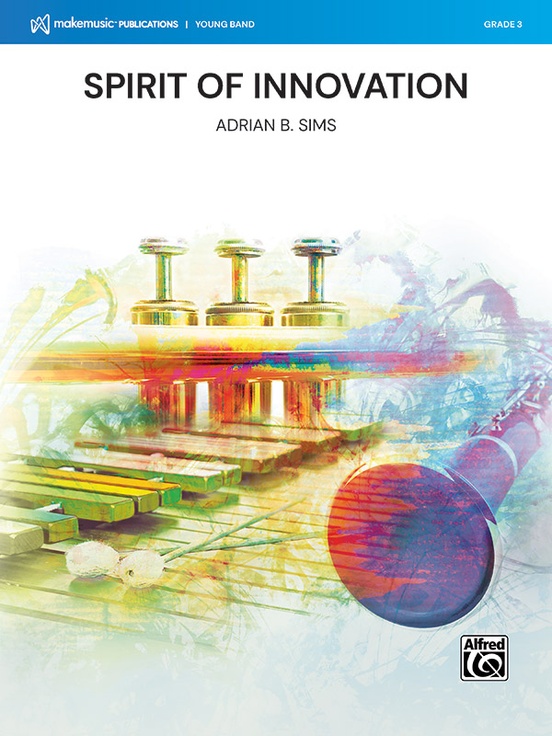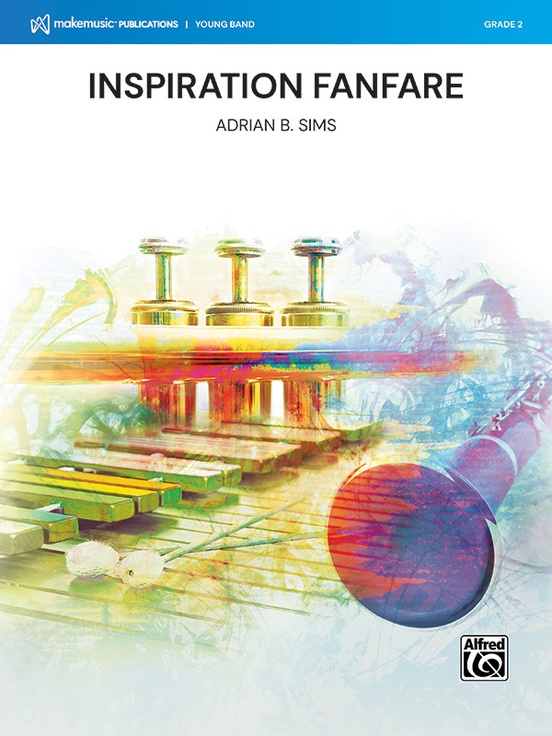Results
-
 £60.99
£60.99Just for Friends - Jerry B. Bensman
The rock ballad Just for Friends is a gem for the conductor and the band. A marvellous number that allows the bandleader to show off the qualities of various solo-instruments.
Estimated dispatch 7-14 working days
-
 £73.50
£73.50Spirit of Innovation (Concert Band - Score and Parts) - Sims, Adrian B.
Spirit of Innovation begins with a glimmer of hope depicted by optimistic harmonies and ascending motifs. Adrian Sims has written engaging percussion parts, intensifying woodwind ostinati, and sustained brass lines to propel this work to its exciting conclusion. A spectacular celebration of achievements in Indiana's City of Firsts!Duration: 4.45
Estimated dispatch 7-14 working days
-
 £98.50
£98.50Orbital (Concert Band - Score and Parts) - Sims, Adrian B.
Referring to the orbit of an electron, planet, or galaxy, Orbital propels the listener back and forth between musical ideas representing tremendous gravitational forces. Adrian Sims does a phenomenal job in the development of this work, and the heroic central theme truly soars as the piece comes to a thrilling and powerful conclusion!Duration: 4.15
Estimated dispatch 7-14 working days
-
 £66.95
£66.95Inspiration Fanfare (Concert Band - Score and Parts) - Sims, Adrian B.
Fuelled by the inspiration of morning sunlight, Adrian Sims has written this colourful fanfare depicting joy and opportunity. The opening statement transforms throughout the piece, providing musically engaging parts for all. Extremely playable yet sophisticated in sound, Inspiration Fanfare creates a sense of anticipation and excitement. A joyful celebration of music!Duration: 2.15
Estimated dispatch 7-14 working days
-
 £50.50
£50.50Guardians (Concert Band - Score and Parts) - Sims, Adrian B.
This aggressive work depicts a fortress defended by brave and dedicated fighters. Guardians includes powerful brass and percussive statements that lead to a musical adventure filled with excitement and mystery. Showcase the authority of your ensemble with this sophisticated but accessible work for beginning bands by emerging composer Adrian Sims!Duration: 1.30
Estimated dispatch 7-14 working days
-
 £65.00
£65.00The New Colonial (Concert Band - Score and Parts) - Hall, Robert B. - Glover, Andrew
This brilliant march classic from the pen of New England's March King is now available in a beautiful concert sized edition by Andrew Glover. This delightful 6/8 march features rollicking melodies, and one of the most famous march trios of all time. Fully updated for concert band from the original quickstep-sized parts, this march will be a favorite of audiences and performers every time! Outstanding!
Estimated dispatch 7-14 working days
-
 £50.50
£50.50Guardians - Adrian B. Sims
This aggressive work depicts a fortress defended by brave and dedicated fighters. includes powerful brass and percussive statements that lead to a musical adventure filled with excitement and mystery. Showcase the authority of your ensemble with this sophisticated but accessible work for beginning bands by emerging composer Adrian Sims! (1:20)
Estimated dispatch 3-5 working days
-
 £66.95
£66.95Inspiration Fanfare - Adrian B. Sims
Fueled by the inspiration of morning sunlight, Adrian Sims has written this colorful fanfare depicting joy and opportunity. The opening statement transforms throughout the piece, providing musically engaging parts for all. Extremely playable yet sophisticated in sound, creates a sense of anticipation and excitement. A joyful celebration of music! (2:15)
Estimated dispatch 3-5 working days
-
 £58.50
£58.50Champions Rising - Adrian B. Sims
This dynamic work captures the rising champion spirit in all of us. Bold melodic lines and powerful percussion writing convey virtues of persistence, resilience, determination and excellence. After a great deal of melodic and harmonic development, the music comes to a thrilling conclusion. Guaranteed to have your band rising to new heights!
Estimated dispatch 3-5 working days
-
 £58.50
£58.50Moonlight Bliss - Adrian B. Sims
Enjoy the tranquility of the night and the stars above. A memorable theme and stunning harmonies encapsulate the view of the twinkling night sky. This approachable and powerful work will have your students enthusiastic about playing more lyrical music, and is certain to have a stunning impact on your audience.
Estimated dispatch 3-5 working days
